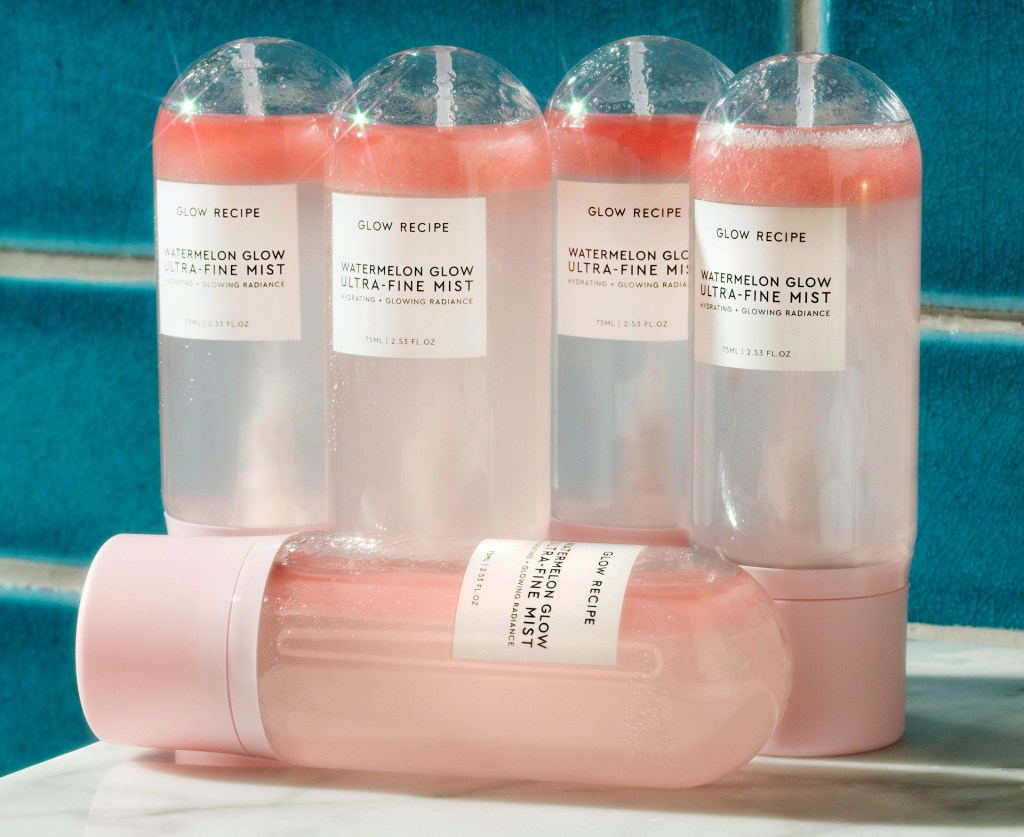
If you’re breaking out more than usual lately — or in areas where zits are typically rare — you’re not alone. You may just be dealing maskne, short for mask acne, used to describe the latest source of breakouts. That’s on top of stress of the pandemic itself, which can indeed set off acne-causing hormones. “I am seeing a lot of patients with pimples, redness, and irritation around their cheeks, mouth, and jawline from wearing masks,” says Michele Green, MD, a board-certified dermatologist in New York City. This rise in mask acne, or maskne for short, can be harder to get rid of than your average breakout, and even more so during the summer. Here’s how to deal with it.
What causes maskne?
This isn’t exactly an unsolved mystery: Face masks and coverings cause mask acne. (Say it with us: Duh.) That being said, they’re not the only factor behind it. As it is, oil, bacteria, and dead skin cells converge to create clogs within pores, says Green. Now, on top of that, “the mask, coupled with heat and sweat, clogs the pores and creates an increase in bacteria and cysts,” she says. Just by sitting on and rubbing your skin for long periods of time, the mask can also impair the skin barrier, making skin that much more vulnerable to acne-causing bacteria, too. (More on that in a bit.)
That means you may experience breakouts in places where you might not usually get them, such as the cheeks and around your mouth. And we’re not talking about your average blackheads. Rather, “the result of this occlusion is both comedonal acne and acne cysts,” says Green. And just to complicate things are the heat and humidity of summer. “Wearing these masks outside in the hot summer weather is making maskne even worse,” she says.
“Face masks, due to their occlusion, are causing damage in the skin barrier.”
Michele green, md
The difference between mask acne and typical acne
Mask acne isn’t your typical, run-of-the-mill acne. “Traditional acne is caused by hormones, or genetics,” says Dr. Green. That’s called acne vulgaris, and it’s the most common variety. Mask acne, on the other hand, is a form known as acne mechanica, which is the acne that results from applying pressure to or rubbing the skin.
In some ways, acne mechanica is even worse than acne vulgaris, since the former does a number on your skin health. “Face masks, due to their occlusion, are causing damage in the skin barrier,” explains Green. And a damaged skin barrier opens a Pandora’s box of skin issues, leading to inflammation, irritation, dryness, and — what else — even more acne.
Things won’t exactly ease up once the temperatures drop back down, either. “In the winter, if you are prone to dry skin or eczema, the skin’s protective barrier is already compromised — and the mask will exacerbate this condition along with your acne,” she says. Clearly, it’s best to nip this in the bud now.
What’s the best way to treat maskne?
Since forgoing a mask entirely isn’t a good option right now, your best bet is to treat it as you would any type of acne — as well as support your skin barrier. So, for starters, “Wash your face and exfoliate with the right products,” says Green. That includes beta hydroxy acids, which clear out pores to minimize the chances of a clog. Not only is the Blueberry Bounce Cleanser a no-brainer here, as it gently cleanses without stripping, but so is the Watermelon Glow PHA+BHA Pore-Tight Toner, which has pore-clearing BHA as well as hyaluronic acid and cactus water to hydrate. Try using the Pore-Tight Toner to spot-treat acne as it appears, too.
Already dealing with a stubborn breakout? Green likes retinoids for more intense cases. You can find extra-gentle, encapsulated retinol (an over-the-counter form of retinoid) in the Avocado Melt Retinol Sleeping Mask. Be consistent with it, especially if you’re wearing face masks all day, every day. “Using acne masks a few times a week can help clean and unclog your pores and keep this condition at bay,” she says.

Is there any way to prevent mask acne?
The best way to prevent maskne is to wash your face regularly — and we don’t mean as the last thing you do before bed. Rather, Green recommends using a gentle cleanser as soon as you go home and remove your face mask. “After washing your face, I would apply an oil-free moisturizer to your skin,” she says. Try oil-free Watermelon Glow Pink Juice Moisturizer, which offers soothing botanical extracts and (bonus) cools skin with its gel-emulsion texture — a real treat after being outside in the heat.
Also, opt for cotton masks instead of more occlusive materials. Cotton is more breathable, says Green, and you can wash them regularly with a gentle detergent. Consider skipping the makeup, too, as it could potentially clog your pores. Instead, focus on your skin care. “Since masks can irritate and break down the top layer of skin, it is always best to moisturize and apply a thin barrier of protection before putting on your mask,” she says. If you’re taking your mask on and off throughout the day — people have to eat — spritz your skin with the Watermelon Glow Ultra-Fine Mist to keep your skin’s moisture levels steady. Your skin barrier will be happy and healthy, and so will you.
SHOP THE LOOK
RELATED


















No comments found